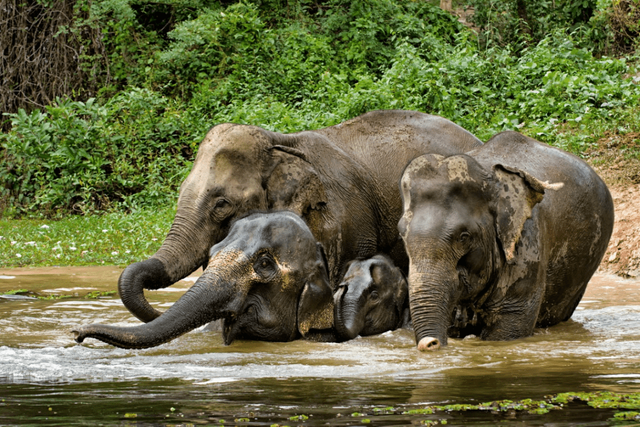Science, mahout traditions may help save Asian elephants from extinction in Laos

Asian elephants are at risk of extinction in the wild and in captivity. That they are not replacing their numbers in captivity may come as a surprise to many. This is why conservation-oriented captive breeding programs are important to the species. Wildlife biologist Anabel Lopez Perez of Laos’ Elephant Conservation Center and Hollis Burbank-Hammarlund of Work for Wild Life International combine to explain.
It’s a “Good Tourism” Insight facilitated by “GT” Insight Partner Work for Wild Life.
All across the globe, wildlife populations face the very real prospect of extinction. And so it is for Asian elephants.
Once numbering in the hundreds of thousands, rampant deforestation, agricultural expansion, human-elephant conflict, and poaching have conspired to dramatically shrink Asian elephant populations.
Current estimates suggest a mere 30,000 to 50,000 individuals are left, with nearly one-third living in captivity. Without increased conservation efforts, Asian elephants will likely become extinct within 150 years.
Captive elephants can help save wild elephants
In Laos, historically known as the “Land of a Million Elephants”, only about 400 wild elephants currently live in small, fragmented herds in the forests. An equal number live in captivity and it is this captive population that holds the key to preventing the extinction of the country’s cherished cultural icon.
Located in Sayaboury province, the Elephant Conservation Center (ECC) was established in 2011. Since then, our biologists, conservationists, elephant health care professionals, and mahouts have remained dedicated to establishing a viable captive elephant breeding program. Our program’s mission is to conserve the species, not to breed more Asian elephants into captivity for tourism.
Our key objective is to reverse the low birthrate among the captive elephant population by blending new science and old traditions with a focus on:
- endocrine (hormonal) evaluation to facilitate conception, and
- mahout mastery to ensure the health and welfare of elephant mothers and their unborn and born babies.
From a conservation perspective, Laos’ captive population is a critical ... continue reading in full and for free at https://goodtourismblog.com/2021/11/science-mahout-traditions-may-help-save-asian-elephants-from-extinction-in-laos/. There are many "Good Tourism" Insights just like this at The "Good Tourism" Blog (https://goodtourismblog.com).